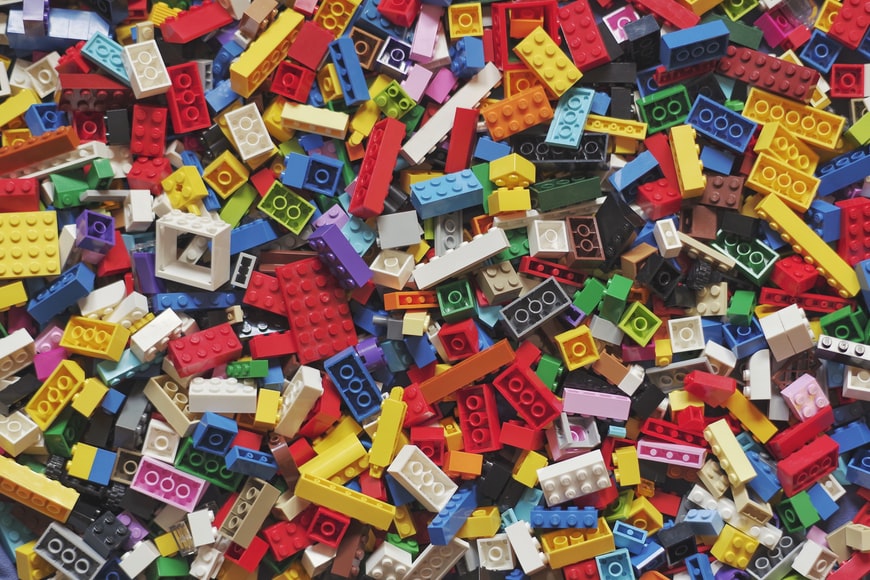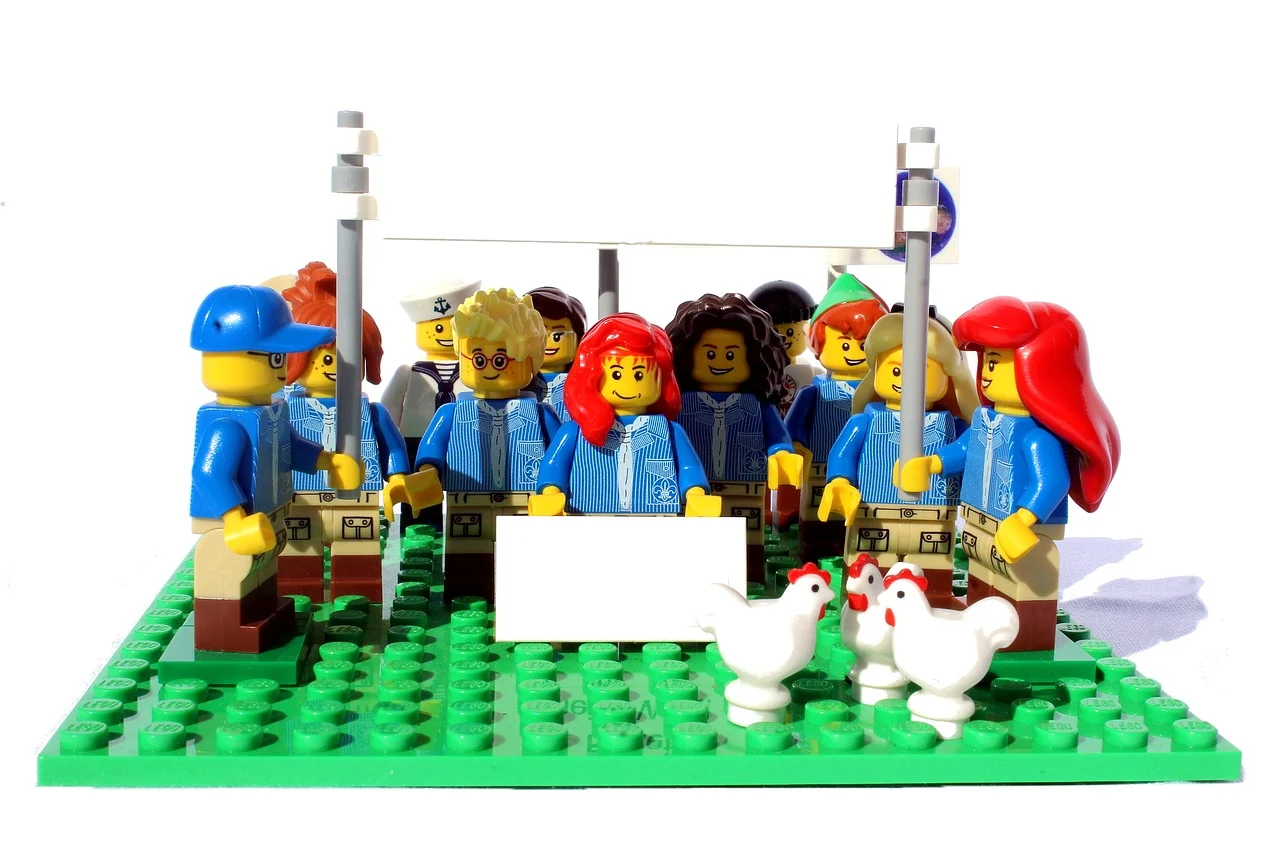Legos comprise bright interlocking plastic blocks, various cogwheels, smaller than usual characters, and different parts. LEGO blocks can be collected to develop vehicles, structures, individuals, connections, and surprisingly working robots. Anything built would then be dismantled once more, and the pieces used to make different items.
The History of Legos
The construction toy company Lego was founded in 1932 by Ole Kirk Christiansen, a carpenter from Billund, Denmark. Christiansen made wooden toys in his workshop. The Danish expression meaning “play well” was the company’s name adopted in 1934. In 1947, the company began making plastic toys as well. In 1949, Lego started making an early version of the now-famous interlocking bricks, dubbed “Automatic Binding Bricks,” and other innovative items. The Kidd craft Self-Locking Bricks, patented in the United Kingdom in 1939 and launched in 1947, served as inspiration for these bricks. Following an inspection of a sample provided by the British provider of injection molding equipment that Lego bought, Lego changed the Kidd craft brick’s design. The cellulose acetate bricks were a refinement of conventional wooden stacking blocks with numerous round studs and an open rectangular bottom initially made from cellulose acetate. The bricks clicked together, but not with such force that it was difficult to separate them.
LEGOS Details
| Category: Collection, Crafts | Time: 30-60 min | Skill: Little |
| Initial Cost: $ (0-50) | Space: lots | People: alone |
| Long-Term Cost: High | Makes Money: No | Location: indoor |
Who pursues this hobby?
“Kids” of all ages love LEGOs. If you had the opportunity to play with LEGOs as a child, you are sure to enjoy introducing them to other children. What you make from Lego of it is up to you. It’s a fantastic hobby for most LEGO fans. It’s harmful to others. It all goes down to how you approach the situation.
LEGO is a fantastic pastime since…
- It’s innovative.
- It’s healthy.
- It may aid in the development of spatial and other abilities.
- It has the potential to benefit your community (doing local displays and activities)
- It may be more cognitively stimulating than other hobbies (if you construct creatively).
- It has the potential to link you with a large number of people (if you use it socially).
Benefits of Lego
Teamwork and Social Skills – For each part, the children are taught specific rules, and they are trained to respect and listen to one another based on who has to perform what role at what time. Working in a group fosters a shared purpose, promotes sharing, and rewards good behavior and social interaction. The facilitator encourages and reinforces social skills and norms.
Communication and Language skills – While participating in this program, the children learn how to express themselves verbally and listen attentively to the replies of others. Language skills are acquired due to the many group roles, discussions, and concepts such as bargaining and compromise. In the case of youngsters playing alone, they may invent tales with their characters and dialogue, establishing the groundwork for their future development of language skills.
Problem-solving, Mathematics, and Spatial Awareness – Reading and interpreting the instructions helps youngsters improve their mathematics abilities and spatial awareness while encouraging them to develop new solutions.
Creativity and Experimentation – Children may become storytellers and creators by making their creations, art forms in and of themselves.
Apart from adhering to directions and working together on projects, children in our Brick Buddies group may express themselves creatively and imaginatively by working either alone or in pairs, freestyle!
Physical Development – Playing with LEGO has improved fine motor abilities and skill and strength in the fingers in studies conducted on children. It’s an excellent exercise for tiny fingers to put together the LEGO parts with varying pressure levels. Lego helps toddlers learn how to hold a pencil and regulate the amount of pressure they use while writing.
Perseverance and Management of Frustrations – Having the bricks fall because of a bit of movement may be distressing; at first, this is irritating, but it happens again. Knowing that their masterpieces may be reconstructed can help youngsters develop persistence and learn to overcome frustration.
Self-Confidence – Lego gives youngsters a feeling of achievement and builds their self-confidence and self-belief by following instructions or coming up with their concepts. Lego then encourages them when they are ready to attempt out more challenging activities.
Lowering Anxiety and Stress – Children who suffer from anxiety or worry may find that building with LEGO has a soothing and relaxing impact on them. On a hectic or stressful day, playing and building with LEGO may provide order and have significant therapeutic effects.
Patience – Putting together a Lego set takes time and patience, especially when one component is particularly elusive. In a society where children frequently seek immediate satisfaction, the construction process may teach them that excellent outcomes can take time, and hard effort can pay off!
Focus and Concentration – Following directions, planning the next piece, waiting their turn, and listening to others when constructing in a group all need attention and may greatly assist youngsters who sometimes require a little more assistance with concentration.
How to get started with Lego
It’s easy to be inspired by the talented and dedicated builders on the show and try your hand at some of your projects. However, getting started may be difficult because of the abundance of available bricks, kits, and methods. You can simply start out with buying sets like the Lego City Town Center so that you will already have everything you need for building.
Cost of Lego as a Hobby?
ABS plastic is the most common material used in LEGO bricks. Purchasing small bags for retail may be costly, costing anywhere from $10 to $20 per pound. However, buying in bulk results in savings. Bulk costs have been quoted as low as $0.40 – $1.00 per pound, although this may vary widely.
Conclusion
Lego building and gathering can be an incredible pastime. Lego consolidates gathering with astonishing play. Many children like to collect particular sets, fabricate them, play with them, split them up, assemble other stuff they make up, or join different sets to construct fantastic developments called blends.


